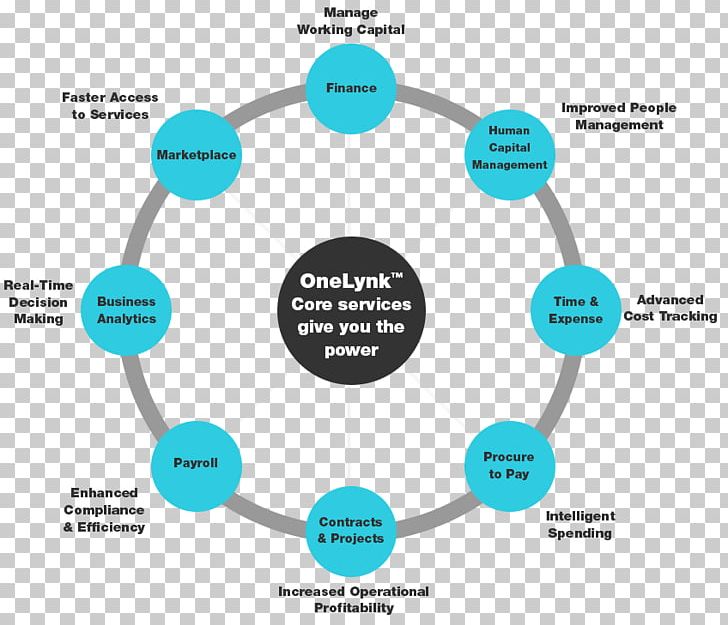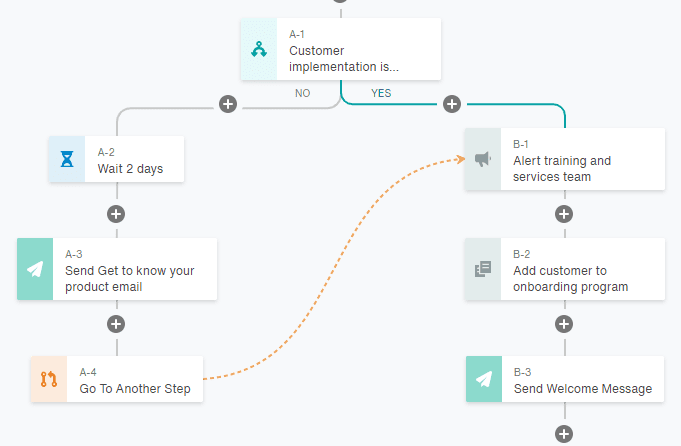
Pardot Dynamic Content is a form of personalization which allows you display different content to prospects depending on the information that you collect in their records. It is a powerful tool to personalize your assets and increase your email conversion rates, click-through rates and ROI. Lori Trzcinski from Slalom, Salesforce Marketing Champions and Marketers(Pardot User Group Leader) will explain how you can implement this into your account-engagement marketing plan. She'll also tell you when to use it for certain scenarios.
Data Driven Content
Dynamic content in Pardot is a flexible tool that lets you display different image/text based on the field values you have on your prospect records. It's a great way to personalize your landing pages, emails and websites. The code is embedded in HTML emails, text email, landing page and SMS messages.
This feature is available on all Pardot versions, including Lightning and Plus. Although the process is complicated, it does not require any coding experience.

Pardot requires that you plan before creating dynamically generated content. This is because dynamic content can be more prone for errors and will require ongoing maintenance. It's important to think about how long you want to have the dynamic content for and where it will be embedded, so that it is impactful and has longevity.
HML and variable tags versus dynamic content
Pardot, when used for personalization can be difficult to understand. It's not possible to use the exact same conditional statements across all variations. It's also difficult to change variable tags when a record changes. In some situations, it is best to keep criteria simple. You can then rely on variables and HML to get your desired results.
Another challenge with dynamic content in Pardot is that it can be difficult to test it before sending out your emails. You can test your dynamic content based only on one field. However, complex conditional sentences may make it more difficult to achieve an accurate outcome.
The biggest benefit of using dynamic content in Pardot is that you can choose a variation that works best for the prospect based on their data. That's especially useful if they're a returning visitor to your website.

Snippets make it easier to manage - they work by linking the campaign and business unit ownership within your database. This can save you time by automating the updating of footer or event information across all your assets.
You can use this to update the contact name based upon their website or their position. This is an easy way to create tailored content for your audience and build brand loyalty.
You can also use the dynamic content to display copy that is different based on score thresholds or buyer persons. It is easier to deliver relevant copy to your audience throughout the buyer journey without creating multiple templates.
FAQ
What is WordPress marketing Automation?
WordPress marketing automation is a tool that automates, streamlines, and effectively manages all communications and online content related to marketing. It includes email campaigns, social media posts and advertising. Automated tasks can be executed efficiently without being too time-consuming or tedious.
Businesses can save time, but it also helps ensure consistent brand promotion on multiple channels. Customers can also engage with them in real time. Automating complicated tasks like segmentation and data analysis can be automated so marketers can concentrate on creating strategies based upon accurate insights instead of manually reviewing large volumes of data.
The core features of WordPress marketing automation include creating automated lead nurturing workflows, setting up powerful triggers to send emails based on specific visitor activities, and customizing customer journeys with personalized messages that will exceed the expectations of potential and existing customers. Tracking detailed reports on website activity and ROI performance are also included to help measure the effectiveness of campaigns.
Essentially, WordPress marketing automation allows businesses to automate mundane operations while improving their overall marketing performance by utilizing better resources available at their disposal--all while keeping costs low.
Is marketing automation the future?
Marketing automation is the use of technology and software to streamline, automate and measure marketing tasks. This allows for the freeing up of manual resources to perform more complicated tasks such as analyzing customer behavior or creating personalized engagement campaigns. It allows marketers to save time, money, and energy by automating routine tasks such as segmentation. Testing and personalizing campaigns. Tracking website visits and behavior. Managing customer engagements across channels.
Marketing automation's future lies within its ability to simplify and better understand the customer journey. Marketers will have the ability to track customer journeys across channels and create personalized experiences for customers by tapping into richer information sources such as social networks or connected devices. This will enable them create strategies that are highly targeted and flexible.
In addition to this, artificial intelligence (AI) will help marketers automate their decisions thus making campaigns even more efficient. AI-powered bots will automate repetitive tasks such as scheduling emails and answering customers' FAQs. This allows marketers to focus on tasks that require human intelligence, such refining the content strategy and understanding customer sentiment about particular products.
Finally, automated marketing is expected to continue growing in popularity with the acceptance of marketing automation tools by smaller businesses and advancements in predictive analytics technologies that help generate insights from data collected through marketing automation.
Marketing automation is an indispensable tool that can help companies succeed in today’s competitive market. Businesses can cut down on time and increase customer satisfaction by investing in the right tools. Businesses can improve their customer satisfaction and response rates by leveraging customer segments. As technology advances, marketing automation will become more crucial in helping businesses to remain competitive and thrive in the future.
How do I automate WordPress blog posts?
Automating a WordPress blog post is the process of publishing content on your blog automatically, based on schedule or events. You can do this by creating an RSS feed or using automation services that allow you to publish automated content. It is also necessary to create triggers. These include when and who should be notified when the post publishes. Automatic posting can be optimized by setting rules that ensure your content is reaching the right audience at the right moment. This allows you to avoid manually monitoring it every day.
Using plugins like Jetpack or Blogger Tag Editor helps in automating a WordPress blog post by offering better control over automated posts with features including allowing for scheduling of posts and customizing publishing date & time, author details, categories & tags for each article before it is published. Some plugins also allow you to integrate your blog with social media platforms. This means that when you publish a new post, it will be shared on all your channels.
Automating WordPress blogging requires careful setup and monitoring; mistakes can lead to inaccurate indexing by Google and other search engines which may result in lower ranking as well as potential customer retention loss due to broken links or outdated information from 3rd party providers. Site visitors who subscribe to email updates or receive news updates from third parties can have a better experience by ensuring that data is delivered promptly from external sources. This helps them stay in line with SEO guidelines.
Publishers can save time and money by using automation tools for WordPress blogs platforms. They also generate quality content that keeps readers interested without needing to post manually every day. Automated blogging solutions don't guarantee success but offer benefits such as improved efficiency cost savings and higher customer engagement rates if utilized correctly.
WordPress marketing automation is a tool that can be used to automate aspects of digital marketing, in addition to automatically posting blog posts. Automation tools are useful for managing social media posts, email campaigns, and other online activities. With personalized messages for each recipient, automated emails can be sent on a consistent basis. Automated social posts can be set up in advance and sent at the right time to maximize engagement. Automated analytics is a great tool for marketers to monitor the performance of campaigns and make data-driven business decisions. Automation allows businesses to save time and allow them to focus on more creative tasks.
Marketing automation can also be used to personalize customer experiences. The automation tools allow businesses the ability to identify customer preferences and their interests. Businesses can then tailor offers and content to appeal to this audience. Personalized messages can be sent to customers via automated emails that are based on past purchases and browsing history. Automated social media posts can be tailored for specific audiences. Automated analytics helps businesses monitor campaign performance and make data-driven business decisions.
Businesses looking to optimize their digital marketing efforts will find marketing automation invaluable. Automation tools can be used for email campaigns, posts to social media, and other online activities. Automation helps companies save time and allows them to focus on more creative tasks. Automating repetitive tasks can help businesses personalize customer experiences. This allows them to offer content and offers that resonate more with their target audience.
What are the different types of marketing automation?
Marketing automation can be a powerful tool to keep customers connected, optimize marketing activities, and make better business decisions. It can help you save time and increase sales.
There are many automated marketing systems. Depending on the needs of your business and your budget, there are many options.
-
Overall Automation Platforms: These are complete tools that can manage all aspects of marketing activities in one place.
-
Email Automation Software - This software allows you build relationships with customers through automated email messages that are personalized to each customer's preferences.
-
Lead Management Systems - Designed for companies to track leads from the beginning stages until they convert into paying customers.
-
Content Creation Tool - Customize content to suit different audiences. You can also measure effectiveness in realtime.
-
Social Media Management Solutions - Streamline all posts, comments, and messages associated with social media accounts into one dashboard for quick action and reaction.
-
Analytics & Reporting Platforms - Keep track of what's working and what isn't so strategies can be adjusted accordingly on an ongoing basis.
Marketing automation also allows you to personalize customer experiences. HubSpot, Pardot and other automation tools allow companies to segment customers based upon their preferences and behaviors. This allows you to customize your messages and content according to each group, creating a more personal experience for each customer. Automation also allows you monitor customer activity to help you better understand their preferences.
Marketing automation is an effective tool that can help businesses save money and increase efficiency. It reduces costs and provides personalized customer experiences. Businesses can get a competitive edge on the market and reach more people in a much shorter period of time by using the right automation software. Automation allows you to monitor customer activity and engage with customers so that your strategies can be adjusted on an ongoing basis. Marketing automation is a powerful tool that can help businesses compete in today's market.
What is SEO automation?
Automation in SEO refers to the use of technology for automating marketing tasks and processes. Automation in SEO helps to save time, cut costs, and makes campaigns more efficient. Automation can help streamline SEO activities such as content creation, keyword research, link building, SEO recommendations, reporting, and much more. Automated SEO solutions use data-driven analysis to identify high value opportunities that would otherwise be difficult to discover using traditional search engines optimization methods.
It's nearly impossible to do anything in SEO these days. That includes everything from monitoring websites performance and competitor insight to optimizing content for better search engines rankings.
With automation working in the background, teams can spend their time on strategic initiatives rather than getting mired in tedious manual tasks. Automation can deliver rapid improvements across a variety of metrics, maximizing ROI and saving valuable resources.
Even better, it allows for you to constantly keep up with changes across search engines. This makes sure that your website is competitive in a changing digital landscape.
Automating can also make it easier to create and distribute content faster. Automated SEO tools enable you to quickly create keyword-rich content tailored to your audience. Automated SEO tools can also be used to schedule and publish content via various channels, such as blogs and social media. This will ensure that your content reaches more people and is visible on search engine results pages.
Is it possible to automate using SQL?
For any scale of the project, from small and quick to complex and massive, SQL is the key to automating business processes. It takes out the tedious work of manually entering data, or searching for tables.
SQL allows you to quickly go through thousands, if not hundreds of records in a table. You can also quickly transform data into colorful graphical visualizations that are easier for everyone to understand.
SQL allows for you to access crucial information about customers, products, activities, and more by running powerful queries across structured data. You can also increase your accuracy and reduce the time you spend on repetitive tasks with these insights.
It is easy to set up automated reports that automatically refresh so that everyone doesn't miss a detail. This saves valuable time and allows you to spend your time outside the office. SQL is a powerful tool that can be used to track processes across departments and help teams communicate important findings.
SQL can be used to automate tasks that involve complex calculations or data manipulation. SQL can be used for automating tasks that require complex calculations or data manipulation. This allows for streamlined workflows and ensures everyone is up to date with the latest information.
SQL can also be used for automating marketing activities, such as email campaigns or website analytics. SQL can be used to automate campaigns targeting specific customer segments and tracking the performance of your website's pages in real-time.
Statistics
- Marketing automation is one of the fastest-growing technologies out there, according to Forrester's Marketing Automation Technology Forecast, 2017 to 2023. (marketo.com)
- Not only does this weed out guests who might not be 100% committed but it also gives you all the info you might need at a later date." (buzzsprout.com)
- The highest growth for “through-channel marketing automation” platforms will reach 25% annually, with “lead-to-revenue automation” platforms at 19.4%. (marketo.com)
- Even if your database is currently filled with quality leads, how effective will your marketing automation be when you've either converted all those leads into customers or when your database begins decaying by ~22.5%/year? (hubspot.com)
- Companies that implement this kind of lead scoring enjoy 28% better sales productivity and 33% higher revenue growth than companies without lead scoring (MarTech Alliance). (marketo.com)
External Links
How To
How do you set up and configure your content marketing automation workflows.
Automated workflows are a set of actions that can be triggered to improve efficiency and decrease workload in optimizing content marketing. This workflow simplifies multiple tasks and makes it easy to complete them all with little effort. Automation workflows are great for managing any content marketing campaign. But they can also be very useful when done correctly.
Setting up an automation workflow requires some planning and careful strategizing in order to get the best out of it. After you have determined the task objectives, timeline and other details, it is time to research the steps needed to accomplish those tasks. Next, plan a step by step process and include milestones for each stage. Each milestone should be used as a checkpoint to help you track where your campaign is at any given point and to determine if there are any changes or updates that need to be made.
Now it is time to set up your automation processes so they flow seamlessly. The steps that you need to configure your workflow include setting up notification on milestones, creating automated tweets or posting email marketing messages and automating user feedback notifications. Before you publish the campaign, ensure that everything is correct. This will prevent any problems down the road that could affect deadlines and other goals.
It is important to manage the automation workflow effectively in order for everything to run smoothly. You must monitor progress and make adjustments depending on the results. Pay attention to customer responses and adapt accordingly. Reward good performers and keep future campaigns in mind. Be ready for unexpected changes, pivots and emergency plans if things don't go as planned. All these activities related to managing an automation workflow can help ensure its success throughout its lifecycle duration.